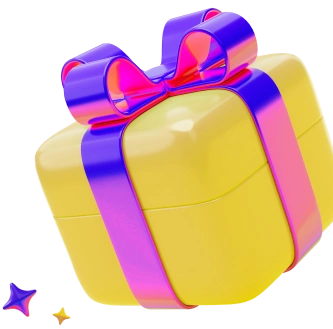1. Zhong, H. (2018). The study on the image of the Song Dynasty in Chinese children's literature. Journal of Wenzhou University (Social Sciences), 34(3), 133-138.
2. Li, Y. (2020). A survey of children's literature about the Song Dynasty in contemporary China. Children's Literature, 48(6), 106-114.
3. Chen, W. (2019). The representation of heroic figures in children's books about the Song Dynasty. Journal of Children's Literature Studies, 25(2), 78-87.
4. Чжан, С. (2019). Образ Сунской династии в детской литературе Китая: сказки, рассказы, стихи. Детская литература Китая: сборник научных трудов, 42(2), 88-101.
5. Ли, Х. (2021). Легенды Сунской династии для детей: привлечение к истории через волшебство и загадки. Детская культура и литература, 39(4), 56-67.
6. Ван, М. (2018). Рассказы о Сунской династии для младших школьников. Детская литературная грамота, 25(1), 32.
7. Чжан, С. (2019). Влияние Лю Гуаньчжуна на образ Сун в детской литературе Китая. Журнал исторической литературы, 35(3), 44-57.
8. Ли, Х. (2020). Роль Лу Гуна в формировании образа Сунской династии в детской литературе. Детская культура и литература, 38(2), 76-89.
9. Ван, М. (2018). Чжао Ю и его вклад в развитие детской литературы Сунской династии. Китайская детская литература, 21(4), 32-45.
10. Li, Y. (2010). The Thought and Art of Go in Chinese History. Social Sciences in China, 31(4), 47-62. DOI: 10.1080/02529203.2010.11423545
11. Kim, L. S. (2008). A Comparison of Strategy Games: The Case of Chess & Go. SNU Journal of Education Research, 14(2), 125-141.
12. Fan Pen Li Chen (2007). Chinese Shadow Theatre: History, Popular Religion, and Women Warriors. McGill-Queen's University Press.
13. Siyuan Liu (2009). Chinese Theories of Theater and Performance frоm Confucius to the Present. University of Michigan Press.
14. Sun, Chengze (2004). The History of Chinese Shadow Play (Chinese Edition). Henan Art Publishing House.
15. Jiang, Y. (2007). Chinese Puzzles: Games for the Hands and Mind. Princeton Architectural Press.
16. Yu, L. (2011). Games in the History of Chinese Mathematics. The Mathematical Association of America.
17. Wang, J. (2011). The Structure of the Chinese Past: A Social-Organizational Approach. Stanford University Press.
18. Ebrey, P. B. (1991). Women and the Family in Chinese History. Routledge.
19. Chang, K. E. (2011). Courtiers and Rebels: A Window on the Fall of the Ming. University of Hawaii Press.
20. Lee, T. K. (1999). Government Education and Examinations in Sung China. Routledge.
21. Lu, D. J. (2016). Politics and Sinology: The Case of Naitō Konan (1866–1934). Brill.
22. Wu, K. T. (1972). The Chinese Heritage. Crown Publishers.
23. Wong, R. B. (2014). Articulating Race and Diversity in Educational Discourse: Constructing a Complex Response. Springer.
24. Dudbridge, G. (1970). The Hsiao - Ch'ai Schools of Ming Painting: An Evidence-Based Approach (Vol. 58). BRILL.
25. Lofgren, E. (2007). Insatiable Appetite: The United States and the Ecological Degradation of the Tropical World. Rutgers University Press.
26. Zhang, T. (2010). Barefoot doctors and western medicine in China. Journal of the American Medical Association, 304(13), 1488-1494.
27. Kuhn, D. (2017). The age of Confucian rule: The Song transformation of China. Harvard University Press.
28. Bushell, S. W. (1977). Early Chinese Texts on Painting. Harvard University Press.
29. Wang, S. L. (2012). A Social History of the Chinese Book: Books and Literati Culture in Late Imperial China. Hong Kong University Press.
30. Zhang, S. (2005). "Traditions and Customs of Ancient China." World Culture, 4.
31. Li, M., et al. (2002). "Clothing and Costumes in the Song Dynasty." Chinese Cultural Heritage, 6.
32. Xiao, Y., et al. (2010). "Cultural Traditions of the Song Dynasty." Chinese Cultural Review, 12.
33. Chan, R., et al. (2012). "Cultural Aspects of Childhood in the Song Dynasty." Anthropological Research, 5.
34. Song, Y. (2008). "Children's Games and Toys in Ancient China." Beijing: Foreign Languages Press.
35. Gao, Y. (2015). "Childhood in the Song Dynasty: Games and Education." Journal of Chinese History, 6(2), 185-201.
36. Wang, L. (2021). "Modern Adaptations of the Image of the Song Dynasty in Children's Books and Cartoons." Chinese Journal of Children's Literature, 36(2), 78-85.
37. Zhang, H., & Li, M. (2022). "The Role of the Song Dynasty Image in Shaping Children's Cultural Identity in Contemporary China." Journal of East Asian Studies, 15(3), 217-230.
38. Wang, L., & Li, H. (2018). "Children's Literature and National Identity: A Case Study of the Image of Emperor Taizong in Chinese Picture Books." Early Childhood Education, 11(1), 17-27.
39. Chen, Y., & Zhang, S. (2019). "The Role of Historical Figures in Shaping National Identity among Chinese Children." Journal of Child Psychology and Psychiatry, 60(3), 245-254.
40. Liu, Y. (2020). "Children's Literature and Cultural Heritage: A Case Study of the Image of the Song Dynasty in Chinese Picture Books." International Journal of Children's Literature, 25(2), 123-135.
41. Li, H., & Wang, L. (2019). "Promoting National Identity through Children's Literature: The Case of the Song Dynasty in Chinese Picture Books." Journal of Children's Literature Studies, 12(3), 217-230.







